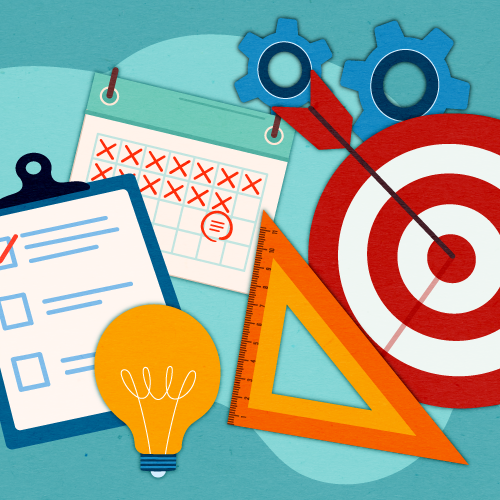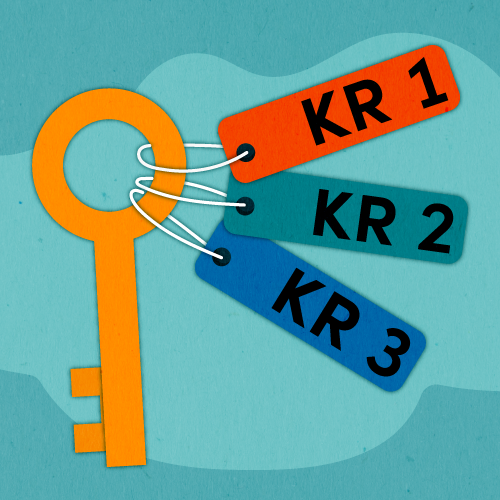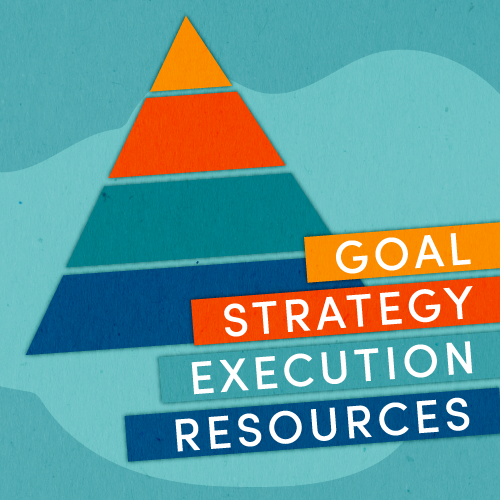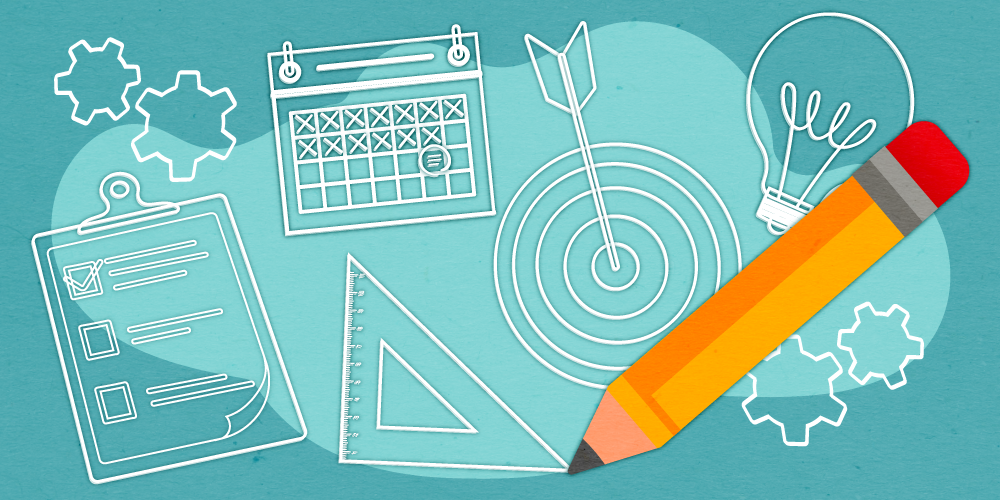goal setting framework is a step-by-step process for organizing tactics so they can be easily accomplished. Goal frameworks teach us how to create milestones that mark each stage of our progress, resulting in a clear strategy (or plan) for achieving our goal.
Goal setting frameworks help teams produce better results by:
- Increasing team engagement by providing clear roles and responsibilities.
- Providing clear guidelines on how to set and achieve goals effectively.
- Improving performance by achieving frequent small wins (consistent motivation).
- Encouraging continuous improvement by giving constructive feedback regularly.
Five principles for successful goal setting
- Use clear language. Goals need to be clear, specific, and well-defined (think SMART).
- Present a worthy challenge. Sufficiently challenging goals keep the team interested, reduce boredom, and can tap into intrinsic motivation. A good challenge pushes the team past their comfort level, not past the breaking point (see task complexity next).
- Keep it simple—reduce task complexity. Task complexity is when the work goes beyond a team’s ability—capacity and/or capability—to achieve the stated goal. Challenge is good, but not when it isn’t achievable.
- Define your team's "shared commitment." A shared commitment (shared purpose or "why") keeps the team focused on the goals set for them regardless of the circumstances. To be shared, the entire team needs to be aware of and dedicated to the goals set for them (we call this buy-in).
- Give consistent, timely, and constructive feedback. A key component of effective learning is feedback. Feedback is a means of improvement, encouraging team members to complete goals and objectives. Schedule regular check-ins with the team to track progress and provide timely and specific feedback on tasks/actions. Learn tips for giving effective feedback here.
Four things to consider before goal setting
Having a clear vision (or “why”) is essential before setting any goal. For instance, we should know what to achieve and why it matters. This helps us understand if what we’re doing is a good investment of our time. It’s also a good way to clarify the shared purpose.
Here are a few things that can help you before setting a goal:
 It is crucial to identify a project's Strengths, Weaknesses, Opportunities, and Threats. A SWOT analysis can help you determine where you need to excel and where you may run into problems. Analyzing SWOT enables you to focus on specific goals and objectives.
It is crucial to identify a project's Strengths, Weaknesses, Opportunities, and Threats. A SWOT analysis can help you determine where you need to excel and where you may run into problems. Analyzing SWOT enables you to focus on specific goals and objectives.
Here's a quick SWOT analysis overview to learn more.
 Benchmarking is another way to specify a minimum performance standard for a process, quality characteristic, or task. The three things' teams need to succeed in achieving a goal or benchmark are:
Benchmarking is another way to specify a minimum performance standard for a process, quality characteristic, or task. The three things' teams need to succeed in achieving a goal or benchmark are:
- Motivation – desire or willingness to achieve the stated goal.
- Knowledge – possess the required theoretical or practical understanding to achieve the goal.
- Resources – garner the necessary money, materials, staff, and other assets to achieve the goal.
 Reflecting on the previous year’s goals helps identify what worked, what didn’t, and how best to achieve the desired result. To plan correctly for the next year, examine missed goals for obstacles that may have prevented achievement. Work to ensure identified obstacles are addressed and/or removed next time.
Reflecting on the previous year’s goals helps identify what worked, what didn’t, and how best to achieve the desired result. To plan correctly for the next year, examine missed goals for obstacles that may have prevented achievement. Work to ensure identified obstacles are addressed and/or removed next time.
Review last year's goals in HR's Performance Manager on Pulse.
 The sweet spot is finding a goal that is important to you and your team that aligns with organizational priorities. This helps prioritize and focus your efforts, so you don’t become overwhelmed by too many goals. Additionally, goals that align with organizational priorities have several advantages: A lot of the goal setting process has been done for you, you can often tap into existing resources and data, and senior leaders are usually eager to sponsor these efforts.
The sweet spot is finding a goal that is important to you and your team that aligns with organizational priorities. This helps prioritize and focus your efforts, so you don’t become overwhelmed by too many goals. Additionally, goals that align with organizational priorities have several advantages: A lot of the goal setting process has been done for you, you can often tap into existing resources and data, and senior leaders are usually eager to sponsor these efforts.
Ready to get started? *
Here are three goal setting frameworks to consider:
 SMART Goals – are simple goal statements that are Specific, Measurable, Attainable, Relevant, and Time-bound. Learn how to write a SMART Goal here. SMART Goals – are simple goal statements that are Specific, Measurable, Attainable, Relevant, and Time-bound. Learn how to write a SMART Goal here. |
 OKRs (Objectives and Key Results) – a team-based goal-setting methodology that helps teams set challenging, yet measurable goals. Learn how to set team OKRs here. OKRs (Objectives and Key Results) – a team-based goal-setting methodology that helps teams set challenging, yet measurable goals. Learn how to set team OKRs here. |
 Goal Pyramid – is a goal setting framework that supports strategic planning at the individual, department, and system-levels. Learn how to build a goal pyramid here. Goal Pyramid – is a goal setting framework that supports strategic planning at the individual, department, and system-levels. Learn how to build a goal pyramid here. |
* Remember, it is essential to have a clear vision (or “why”) before setting any goals.
Kripa Kuncheria
SMART Goals are a great starting point for any project. Project management expert Kripa Kuncheria helps us organize our teams’ efforts by outlining this goal setting framework with a simple step-by-step guide to try right now.
Strategic planning can feel overwhelming—good thing there’s a framework to help make it easier. Project management expert Kripa Kuncheria introduces Goal Pyramid—a strategic framework for goal setting that helps translate big ideas into manageable actions.
The new Master of Education in Health Professions degree program offers a unique opportunity to improve teaching skills, influence the future of clinical care, and increase the impact of clinical educators. The program’s interprofessional leaders, Joanne Rolls, Rebecca Wilson, and Wendy Hobson-Rohrer, share why the program is important and offer a few quick tips to improve your teaching today.
